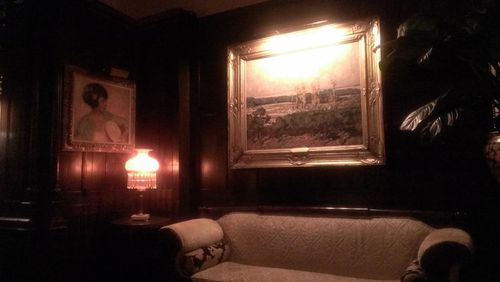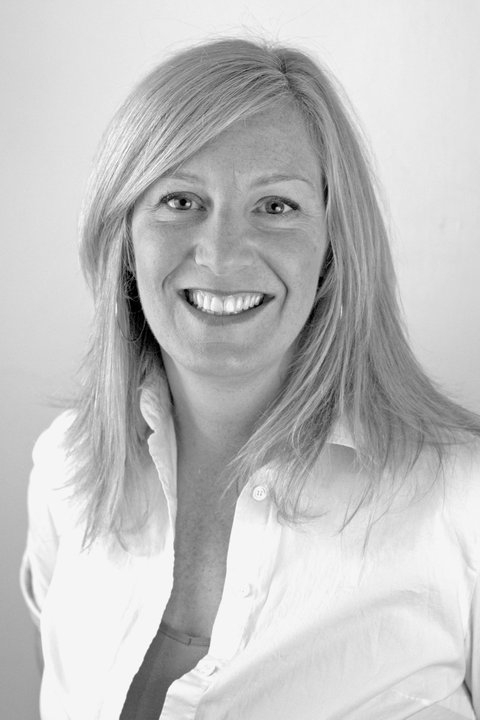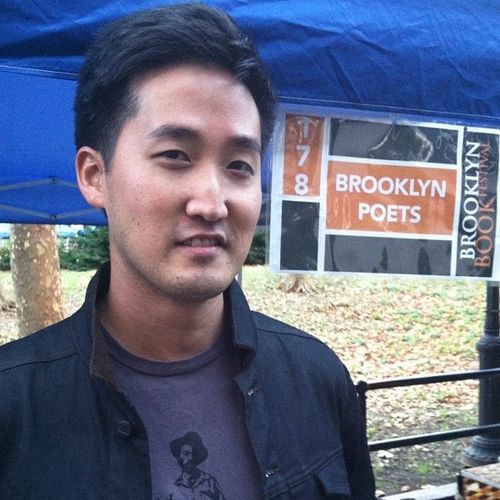
Manierre Dawson (1887–1969) Untitled (Wharf Under Mountain), 1913 Oil on canvas 18 x 22 in. (Norton Museum of Art, Purchase, the R.H. Norton Trust, 69.5). On view for a time during the Chicago stopover of the 1913 Armory Show.
THE WALL STREET JOURNAL
February 26, 2013
The Forgotten Americans
by James Panero
A review of "The New Spirit: American Art in the Armory Show, 1913" at the Montclair Art Museum, Through June 16, 2013
February 17 might just as well be the Fourth of July for modern art in America. On that date in 1913, the first 4,000 viewers walked through the doors of the "International Exhibition of Modern Art," the groundbreaking event we remember simply as the "Armory Show." Housed in the drill hall of the 69th Regiment Armory on New York's Lexington Avenue, the exhibition of some 1,200 works introduced 100,000 visitors to the modern art of Picasso, Matisse, Kandinsky and Duchamp during its month-long run before traveling on, in increasingly compact versions, to Chicago (where it drew even bigger crowds) and Boston.
For a generation of American artists and collectors, the Armory Show had a profound effect. On the streets and in the popular press, it inspired a full-throated debate over modern art. Even Theodore Roosevelt published his own review. "No single event, before or since, has had such an influence on American art," wrote the Whitney Museum director Lloyd Goodrich at the time of its 50th anniversary.

One of the few photographs that exists of the 1913 Armory Show's installation in the Lexington Avenue armory.
Yet what gets overlooked in this story of European modernism on the Hudson is that two-thirds of the art at the Armory was by Americans. "The New Spirit: American Art in the Armory Show, 1913" at the Montclair Art Museum, is the first exhibit to focus on those works.
Organized by the Montclair's chief curator, Gail Stavitsky, and the scholar Laurette McCarthy, "The New Spirit" brings together 40 of the 800-plus American paintings, sculptures, drawings and prints that were on view during the Armory Show's original New York run. (A much smaller selection of American art made it to the Art Institute of Chicago in 1913, and the Americans were dropped entirely from the Armory Show's final stop at Copley Hall in Boston.)
The Armory Show was the creation of a society of independent American artists looking for a place to exhibit outside of the art academies. For most of them, the show was meant to be an exhibition displaying the wide range of American modern art of the time, from the realism of the Ashcan School to the experiments of the Stieglitz-circle painters.
Oscar Bluemner, William Glackens, Marsden Hartley, Robert Henri, John Marin, Maurice Prendergast, Charles Sheeler and John Sloan were all in the Armory Show, and their contributions are now brought back together in Montclair.
The European component of the Armory Show, first planned on a smaller scale, became the juggernaut we remember today due to three American artists—Arthur B. Davies, Walt Kuhn and Walter Pach—who took charge of the European selection. Through a whirlwind tour of Germany, France and England, they assembled the eye-popping run of European masters that certainly overshadowed and most would say outdid the larger American section. Their show-within-a-show started with Ingres and went through Cézanne, Gauguin, and van Gogh, on up to work plucked directly from the studios of Redon, Brancusi and Duchamp. "Nude Descending a Staircase," Duchamp's Futurist-style 1912 painting now in the Philadelphia Museum of Art, became the Armory's biggest sensation and was most famously described as an "explosion in a shingle factory."
Montclair is on something of a revisionist mission. It wants not only to remember the Armory's American artists but also to "challenge the long-held view that the American art in the Armory Show was somewhat monolithic, pallidly provincial, and overshadowed by the uproar of critical and popular attention paid to the avant-garde Europeans."
It is true that the America of 1913 was not nearly the cultural backwater the Armory's "timeworn legend," as Ms. Stavitsky puts it, has led us to believe. The Armory Show itself, after all, was the vision of American artists. Some American modernists at the time, like Hartley, were directly engaged with Europe's progressive artistic circles (although, at the Armory, Davies unfortunately chose not to display Hartley's more abstract paintings). In the years leading up to 1913, Americans also had several chances to be exposed to art's latest innovations. Alfred Stieglitz's 291 gallery mounted the first American exhibitions of Brancusi, Cézanne, Matisse, Picabia, Picasso and Rousseau.
But the Montclair's interesting exhibit will only uphold the long-held verdict that the Armory's "American annex," in Kuhn's own words, was overall "a sad affair." Despite a handful of adventurous examples, "The New Spirit" reveals that the American section at the Armory Show was saddled with outmoded Impressionist-style work, such as "Fairy Stories (Fairy Tales)" (1912) by Elmer MacRae and "Hillside" (1912) by Gustave Cimiotti, that would send anyone running for the Duchamps. Faced with these examples, it is hard not to see the Armory Show as anything but that "masochistic reception whereat the naïve hosts are trampled and stomped by the European guests at the buffet," as the American modernist Stuart Davis, then an Ashcan artist, recalled years later.
The Montclair catalog suggests several reasons why the Americans were a disappointment. While Davies, Kuhn and Pach could select the best of Europe, the sprawling American selection, which enjoyed less curatorial control and was mired in artist politics, became a "melée of antagonistic examples," according to Bluemner. Many pioneering American modernists were left off the Armory list altogether, including A.S. Baylinson, Jerome Blum, Charles Demuth, Arthur Dove, B.J.O. Nordfeldt and Max Weber.
For its part, "The New Spirit" does not necessarily show the Armory's Americans at their best. Albert Pinkham Ryder and Morton Schamberg, much talked about in 1913, are absent, as is Kuhn's important contribution called "Morning," while several lesser works have been unearthed that should have remained buried. The curators' choice to decorate the room with garlands, recalling the original show, further gives the display an archaeological feel.
At the same time, "The New Spirit" also shows that several American artists were working through important new ideas in 1913. The moody riverscape by Van Dearing Perrine and the crystalline abstraction by Manierre Dawson are among the surprises here. These examples and others explain how, even if the Europeans won the day, American modernists would soon supplant them. "America in the spirit of its newness," predicted Kuhn, "is destined to be the coming center." The Armory Show made that possible.







